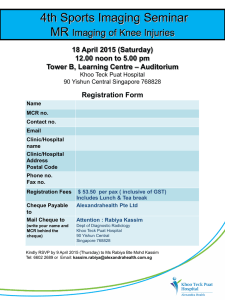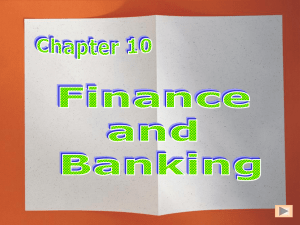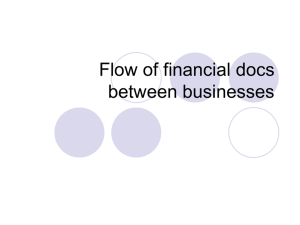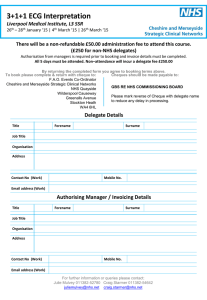Cheques - Ulster Bank MoneySense at Home
advertisement
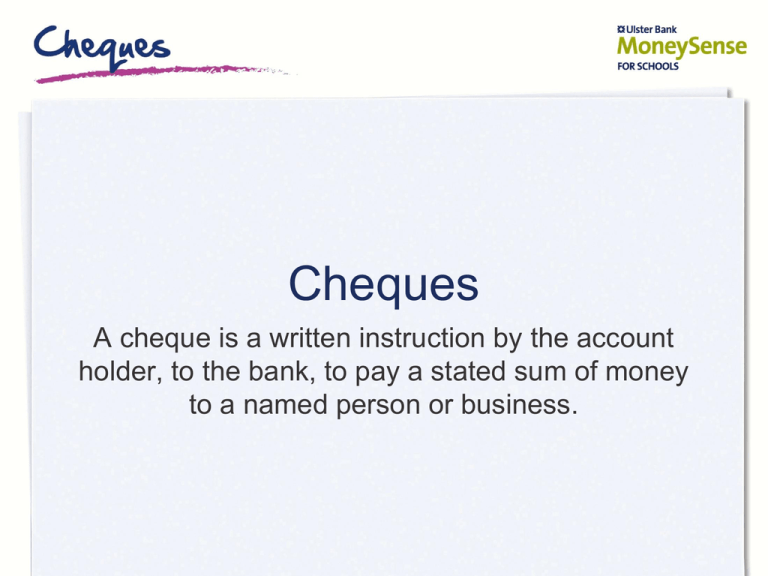
Cheques A cheque is a written instruction by the account holder, to the bank, to pay a stated sum of money to a named person or business. There are three parties to a cheque A ‘party’ is a named person or organisation: Drawer – the person who signs the cheque (the account holder) Drawee – the name of the account holder’s bank branch Payee – the person who the cheque is made payable to (also called the beneficiary) Details on a cheque Amount paid in figures – sum to be paid to the payee Current account number – the drawer’s 8-digit account number Bank sort code – 6 digits Cheque number – each cheque has a unique, consecutive number NB: In the Republic of Ireland, government stamp duty applies. Details on a cheque, cont’d Date the cheque is written – must not be post-dated (in the future) Name and signature of account holder (drawer) Name of the person to whom the cheque is paid (payee) Amount paid in writing – must match the amount in figures Every cheque has a counterfoil, or ‘stub’ This is the part of the cheque that’s left in the chequebook. Always complete this as a record of your cheque payments and spending: Amount Date Payee (who it was made out to) Check each stub against your bank statement. Refusal of a cheque A bank may refuse to cash (pay) a cheque if: Any information is missing The cheque is dated in the future It is over 6 months old (known as ‘stale’) It is not signed or the signature doesn’t match the copy in the bank’s records The cheque has been altered and not initialled by the account holder The amount in words and figures doesn’t match There are insufficient funds in the account Crossing a cheque makes it safer A bank may refuse to cash (pay) a cheque if it is crossed. ‘Crossing’ means drawing two parallel lines across the front of the cheque. Some banks issue their cheques already crossed. Crossing means the cheque cannot be cashed (exchanged for cash at a branch). The cheque can only be paid into the bank account of the person it’s made out to. What should the payee do? If you are taking a cheque as payment you should check that: The cheque has been signed Your name has been spelt correctly The cheque is ‘in date’ and not post-dated The amount in words and figures match Cheque terms Blank Cheque The cheque is signed but the details are missing (no figures) Stale Cheque A cheque that is 6 months old Post-Dated Cheque A cheque that has been dated sometime in the future Open Cheque A cheque that doesn’t have the payee’s name on it Crossed Cheque A way of making a cheque safer by putting two parallel lines across the face of it. It cannot be cashed and must be lodged into the payee’s account. Bounced/Dishonoured Cheque, or Unpaid Cheque A cheque that a bank refuses to accept because it is stale or post-dated, it isn't completed properly or the drawer has no money to back the cheque Endorsed/Negotiated Cheque A cheque that is passed on to someone else by the payee signing his/her name on the back of it
